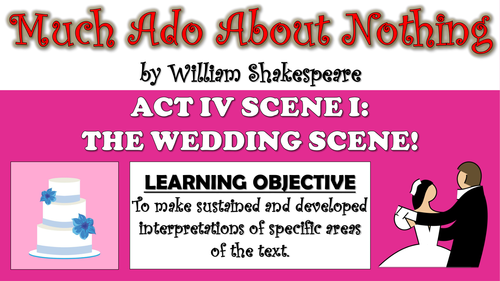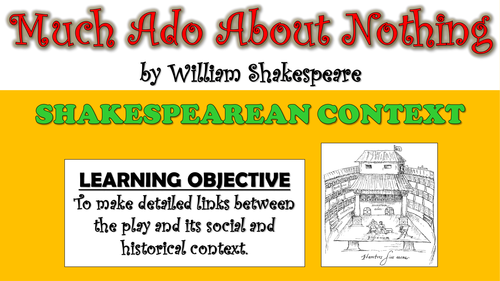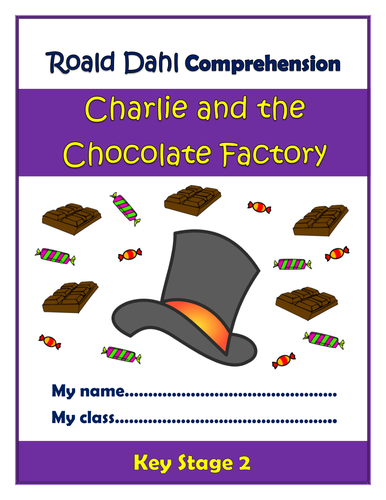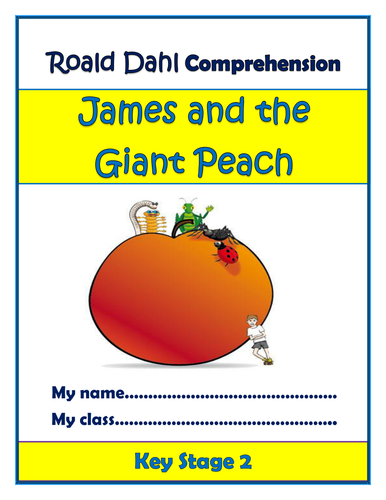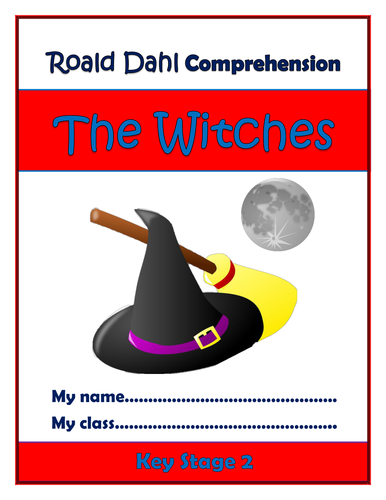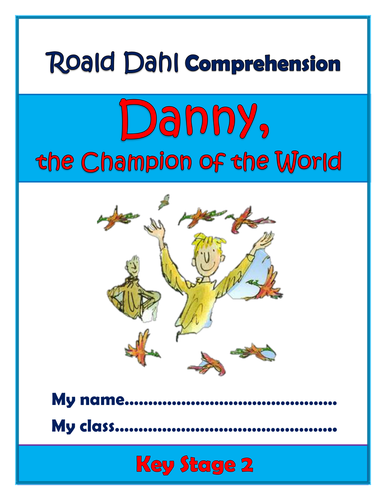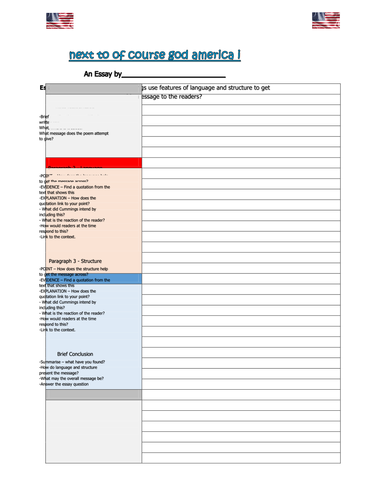
3k+Uploads
1953k+Views
2271k+Downloads
Whole school

Much Ado About Nothing - Don John
This engaging, in-depth lesson enables students to understand how plot and language are utilised to introduce and develop the character of Don John in Shakespeare’s ‘Much Ado about Nothing.’
The lesson places a particular focus upon how quotations by and about Don John, in addition to his position as an 'illegitimate' or outsider, help to clarify and develop his role as a villain. Students also critically analyse how his behaviour develops over the course of the text.
The lesson follows a step-by-step learning journey, in which students learn through:
- Taking part in a fun team quiz to secure understanding of Don Pedro;
- Understanding his role in catalysing the events of the play;
- Identifying and analysing quotations by Don Pedro to understand how his character is introduced;
- Finding quotations to show how Don Pedro is involved in the confusion and chaos of the plot events;
- Completing an essay style response in which they consider how the character of Don Pedro is introduced and developed;
- Peer assessing each other's learning attempts.
Included is:
- Whole lesson PowerPoint - colourful and detailed - just download and teach from it!
- Introduction to Don John worksheet;
- Development of Don John worksheet;
- Analysis template with success criteria for creating well-structured responses;
- Comprehensive lesson plan.
There are also opportunities for group learning, peer assessment, and whole class discussion. This was originally taught to higher ability year 9 and 10 groups, but can easily be differentiated for groups of different ages and abilities.

Much Ado About Nothing - Shakespeare's Language Choices
This engaging, in-depth lesson enables students to understand how Shakespeare uses a range of colourful and varied language choices to develop the theme of social grace in ‘Much Ado about Nothing.’ Much Ado About Nothing contains some of Shakespeare's most vibrant and interesting language, as characters such as Benedick and Claudio use words to jostle for respect around the noble Don Pedro and Leonato. This lesson explores the devices that they use in order to gain favour with their social superiors.
The lesson follows a step-by-step learning journey, in which students learn through:
- Defining and exemplifying different language devices, such as similes, metaphors, alliteration, and puns.
- Taking part in a fun team quiz to identity the language devices used by the main characters in Much Ado About Nothing.
- Understanding the idea of social grace, and learning how it relates to the social hierarchy within the text.
- Completing an essay style response in which they consider how Shakespeare uses language to develop the theme of social grace.
- Peer assessing each other's learning attempts.
Included is:
- Whole lesson PowerPoint - colourful and detailed - just download and teach from it!
- Cards for card-sorting activity;
- Social grace worksheet;
- Analysis template with success criteria for creating well-structured responses;
- Comprehensive lesson plan.
There are also opportunities for group learning, peer assessment, and whole class discussion. This was originally taught to higher ability year 9 and 10 groups, but can easily be differentiated for groups of different ages and abilities.

Much Ado About Nothing - Pointless Game!
Based on the popular game show 'Pointless', this resource is perfect for use as a whole lesson resource, enrichment option, or revision tool. Editable, so that you can change to any other topic or change questions. (I've also added a blank template so that you can make your own games from scratch). Containing almost 30 slides of sound clips, engaging visuals, and suitably challenging questions, this resource is effective at both promoting engagement and enhancing learning. There are several full rounds of questions to build or revisit knowledge of characters, plot, and themes in 'The Boy in the Striped Pyjamas.'
Round 1. The characters in Much Ado About Nothing
Round 2. Quotations from the text
Round 3. Settings, Themes, and Objects
Round 4. Shakespearean Comedies
The nature of this game ensures that the resource can challenge students of all levels.
A blank template has also been added, so that you can create your own games!

Much Ado About Nothing - Act IV Scene I - The Wedding Scene!
This engaging, in-depth lesson enables students to understand how the plot events in the wedding scene create a sense of climax throughout Act IV Scene I of Much Ado About Nothing. In particular, the lesson focuses upon the language used by Claudio and Leonato to denounce Hero (with links to the expectations within the social/historical context of the renaissance), the dramatic response to the allegations, and Benedick's altering priorities.
The lesson follows a step-by-step learning journey, in which students learn through:
- Identifying the key events of the plot leading up to the wedding scene.
- Reading and comprehending the predominant plot events in Act IV Scene I.
- Understanding the idea of the patriarchal family society, and considering the accusations directed at Hero in light of this.
- Completing an essay style response in which they consider how the key plot events contribute to a sense of climax within the scene.
- Peer assessing each other's learning attempts.
Included is:
- Whole lesson PowerPoint - colourful and detailed - just download and teach from it!
- Cards for card-sorting activity;
- Wedding Scene worksheet (and teacher answer sheet);
- Analysis template with success criteria for creating well-structured responses;
- Comprehensive lesson plan.

Much Ado About Nothing - Shakespeare's Dramatic Devices!
This engaging, in-depth lesson enables students to understand how Shakespeare uses a range of dramatic devices for effect within ‘Much Ado about Nothing.’ In particular, the lesson focuses upon the dramatic irony and tension used to build the themes of confusion and deception. A close analysis of Act II Scene I: The Masquerade Ball, is included, to exemplify the impact of the dramatic devices upon Shakespearean audiences.
The lesson follows a step-by-step learning journey, in which students learn through:
- Defining and exemplifying the key dramatic devices;
- Relating key dramatic devices to the themes of confusion and deception;
- Reading and comprehending the predominant plot events in Act II Scene I.
- Completing an essay style response in which they consider how dramatic devices help to create Shakespeare's intended effects upon audiences.
- Peer assessing each other's learning attempts.
Included is:
- Whole lesson PowerPoint - colourful and detailed - just download and teach from it!
- Cards for card-sorting activity;
- Confusion and Deception worksheet (and teacher answer sheet);
- Act II Scene I analysis sheet
- Analysis template with success criteria for creating well-structured responses;
- Comprehensive lesson plan.

Much Ado About Nothing - Shakespearean Context!
This engaging, in-depth lesson enables students to make detailed links between Much Ado About Nothing and its social and historical context. In particular, students analyse how social features such as courtly love, patriarchal society, social class, and illegitimacy are evidence throughout the play.
The lesson follows a step-by-step learning journey, in which students learn through:
- Defining and exemplifying the key features of Shakespearean context;
- Reading and comprehending key extracts from Much Ado About Nothing, relating them to the features of Shakespearean context;
- Completing an essay style response in which they consider how the key features of social and historical context influence the events of the play.
- Peer assessing each other's learning attempts.
Included is:
- Whole lesson PowerPoint - colourful and detailed - just download and teach from it!
- Pictures of Shakespearean society for the introduction activity;
- Shakespearean society worksheet (and teacher answer sheet);
- Extracts from the text;
- Analysis template with success criteria for creating well-structured responses;
- Comprehensive lesson plan.

Charlie and the Chocolate Factory - Roald Dahl - KS2 Comprehension Activities Booklet!
This resource booklet contains a wide range of age-appropriate, engaging, and meaningful comprehension activities for use throughout the reading of Roald Dahl's 'Charlie and the Chocolate Factory.' Teachers have found them particularly useful in comprehension or guided reading sessions. They are perfect for aiding the progress of children towards meeting the KS2 expectations within the new National Curriculum framework. Children love learning from these resources, whilst they are also of great use to teachers, as there is explicit information within each task regarding which comprehension strands the task is designed to demonstrate. They also relate to key extracts, characters, and themes from the story, ensuring that children gain a deep understanding of the text.
Activities within the booklet include:
- 'An Interview with Charlie Bucket' - to enable students to demonstrate that they can: 'Understand what is read by drawing on information from more than one paragraph, identifying key details that support the main ideas, and using quotations for illustration;'
- 'Dahl's Description' - to enable students to demonstrate that they can: 'Explain meanings of words that they know and ask the meaning of new words. Link the meaning of new words to words that they already know;'
- 'Willy Wonka' - to enable students to demonstrate that they can: 'Understand what is read by drawing on information from more than one paragraph, identifying key details that support the main ideas, and using quotations for illustration;'
- 'Figurative Language' - to enable students to demonstrate that they can: 'Discuss and evaluate how authors use language, including figurative language, to create an impact on the reader.'
Plus many, many more activities (the booklet is around 20 pages in length!) I've also added it as a PDF in case the formatting differs on your computer.
All images are licensed for commercial use, and are cited on a separate document (included).

James and the Giant Peach - Roald Dahl - KS2 Comprehension Activities Booklet!
This resource booklet contains a wide range of age-appropriate, engaging, and meaningful comprehension activities for use throughout the reading of Roald Dahl's 'James and the Giant Peach.' Teachers have found them particularly useful in comprehension or guided reading sessions. They are perfect for aiding the progress of children towards meeting the KS2 expectations within the new National Curriculum framework. Children love learning from these resources, whilst they are also of great use to teachers, as there is explicit information within each task regarding which comprehension strands the task is designed to demonstrate. They also relate to key extracts, characters, and themes from the story, ensuring that children gain a deep understanding of the text.
Activities within the booklet include:
- 'An Interview with James' - to enable students to demonstrate that they can: 'Understand what is read by drawing on information from more than one paragraph, identifying key details that support the main ideas, and using quotations for illustration;'
- 'Dahl's Description' - to enable students to demonstrate that they can: 'Explain meanings of words that they know and ask the meaning of new words. Link the meaning of new words to words that they already know;'
- 'Sponge and Spiker' - to enable students to demonstrate that they can: 'Understand what is read by drawing on information from more than one paragraph, identifying key details that support the main ideas, and using quotations for illustration;'
- 'Figurative Language' - to enable students to demonstrate that they can: 'Discuss and evaluate how authors use language, including figurative language, to create an impact on the reader.'
Plus many, many more activities (the booklet is around 20 pages in length!) I've also added it as a PDF in case the formatting differs on your computer.
All images are licensed for commercial use, and are cited on a separate document (included).

The BFG - Roald Dahl - KS2 Comprehension Activities Booklet!
This resource booklet contains a wide range of age-appropriate, engaging, and meaningful comprehension activities for use throughout the reading of Roald Dahl's 'The BFG.' Teachers have found them particularly useful in comprehension or guided reading sessions. They are perfect for aiding the progress of children towards meeting the KS2 expectations within the new National Curriculum framework. Children love learning from these resources, whilst they are also of great use to teachers, as there is explicit information within each task regarding which comprehension strands the task is designed to demonstrate. They also relate to key extracts, characters, and themes from the story, ensuring that children gain a deep understanding of the text.
Activities within the booklet include:
- 'An Interview with Sophie' - to enable students to demonstrate that they can: 'Understand what is read by drawing on information from more than one paragraph, identifying key details that support the main ideas, and using quotations for illustration;'
- 'Dahl's Description' - to enable students to demonstrate that they can: 'Explain meanings of words that they know and ask the meaning of new words. Link the meaning of new words to words that they already know;'
- 'The Giant' - to enable students to demonstrate that they can: 'Understand what is read by drawing on information from more than one paragraph, identifying key details that support the main ideas, and using quotations for illustration;'
- 'Figurative Language' - to enable students to demonstrate that they can: 'Discuss and evaluate how authors use language, including figurative language, to create an impact on the reader.'
Plus many, many more activities (the booklet is around 20 pages in length!) I've also added it as a PDF in case the formatting differs on your computer.
All images are licensed for commercial use, and are cited on a separate document (included).

The Witches - Roald Dahl - KS2 Comprehension Activities Booklet!
This resource booklet contains a wide range of age-appropriate, engaging, and meaningful comprehension activities for use throughout the reading of Roald Dahl's 'The Witches.' Teachers have found them particularly useful in comprehension or guided reading sessions. They are perfect for aiding the progress of children towards meeting the KS2 expectations within the new National Curriculum framework. Children love learning from these resources, whilst they are also of great use to teachers, as there is explicit information within each task regarding which comprehension strands the task is designed to demonstrate. They also relate to key extracts, characters, and themes from the story, ensuring that children gain a deep understanding of the text.
Activities within the booklet include:
- 'An Interview with The Grand Head Witch' - to enable students to demonstrate that they can: 'Understand what is read by drawing on information from more than one paragraph, identifying key details that support the main ideas, and using quotations for illustration;'
- 'Dahl's Description' - to enable students to demonstrate that they can: 'Explain meanings of words that they know and ask the meaning of new words. Link the meaning of new words to words that they already know;'
- 'Description of the Grand Head Witch' - to enable students to demonstrate that they can: 'Understand what is read by drawing on information from more than one paragraph, identifying key details that support the main ideas, and using quotations for illustration;'
- 'Figurative Language' - to enable students to demonstrate that they can: 'Discuss and evaluate how authors use language, including figurative language, to create an impact on the reader.'
Plus many, many more activities (the booklet is around 20 pages in length!) I've also added it as a PDF in case the formatting differs on your computer.
All images are licensed for commercial use, and are cited on a separate document (included).

Danny, the Champion of the World - Roald Dahl - KS2 Comprehension Activities Booklet!
This resource booklet contains a wide range of age-appropriate, engaging, and meaningful comprehension activities for use throughout the reading of Roald Dahl's 'Danny, the Champion of the World.' Teachers have found them particularly useful in comprehension or guided reading sessions. They are perfect for aiding the progress of children towards meeting the KS2 expectations within the new National Curriculum framework. Children love learning from these resources, whilst they are also of great use to teachers, as there is explicit information within each task regarding which comprehension strands the task is designed to demonstrate. They also relate to key extracts, characters, and themes from the story, ensuring that children gain a deep understanding of the text.
Activities within the booklet include:
- 'An Interview with Danny' - to enable students to demonstrate that they can: 'Understand what is read by drawing on information from more than one paragraph, identifying key details that support the main ideas, and using quotations for illustration;'
- 'Dahl's Description' - to enable students to demonstrate that they can: 'Explain meanings of words that they know and ask the meaning of new words. Link the meaning of new words to words that they already know;'
- 'Description of Mr. Victor Hazell' - to enable students to demonstrate that they can: 'Understand what is read by drawing on information from more than one paragraph, identifying key details that support the main ideas, and using quotations for illustration;'
- 'Figurative Language' - to enable students to demonstrate that they can: 'Discuss and evaluate how authors use language, including figurative language, to create an impact on the reader.'
Plus many, many more activities (the booklet is around 20 pages in length!) I've also added it as a PDF in case the formatting differs on your computer.
All images are licensed for commercial use, and are cited on a separate document (included).

Penguin Pandemonium - Whole Class Reading Session!
This whole class reading session aims to develop children’s comprehension skills through a reading of the opening section of Jeanne Willis’ Penguin Pandemonium.
The resource pack includes the extract needed. This is followed by a series of activities aiming to develop children’s retrieval, explanation, inference, prediction and summarising skills. It also contains a vocabulary check immediately after the extract is read to clarify any unfamiliar/ difficult language.
The tasks are comprised of quick-check questions, solo thinking, pair/ group discussions and deeper thinking activities.
The session is best suited for children in years 2-4, although with minor adaptations it could feasibly be used with slightly younger and older year groups.

Poles Apart - Jeanne Willis - Whole Class Reading Session!
This whole class reading session aims to develop children’s comprehension skills through a reading of the opening section of Jeanne Willis’ Poles Apart.
The resource pack includes the extract needed. This is followed by a series of activities aiming to develop children’s retrieval, explanation, inference, prediction and summarising skills. It also contains a vocabulary check immediately after the extract is read to clarify any unfamiliar/ difficult language.
The tasks are comprised of quick-check questions, solo thinking, pair/ group discussions and deeper thinking activities.
The session is best suited for children in years 2-4, although with minor adaptations it could feasibly be used with slightly younger and older year groups.
The session works great in isolation, but was initially taught as part of a polar explorers link series, with the class dipping into a different polar-themed text each day. The Polar Explorers Whole Class Reading Bundle, containing all of these sessions, is also available on this platform.

Jellyfish Non-Fiction Text - Whole Class Reading!
This whole class reading session aims to develop children’s comprehension skills when reading non-fiction texts. This particular session focuses on their reading of an original information sheet (included) about jellyfish.
The reading is followed by a series of activities aiming to develop children’s retrieval, explanation, inference, prediction and summarising skills. It also contains a vocabulary check immediately after the extract is read to clarify any unfamiliar/ difficult language.
The tasks are comprised of quick-check questions, solo thinking, pair/ group discussions and deeper thinking activities.
The session is best suited for children in years 2-4, although with minor adaptations it could feasibly be used with slightly younger and older year groups.

Mr Stink - Whole Class Reading Session!
This whole class reading session aims to develop children’s comprehension of the opening chapters of David Walliams’ Mr Stink.
The resource pack includes the extract needed (the first chapter of the text - the second chapter is also included). This is followed by a series of activities aiming to develop children’s retrieval, explanation, inference, prediction and summarising skills. It also contains a vocabulary check immediately after the extract is read to clarify any unfamiliar/ difficult language.
The tasks are comprised of quick-check questions, solo thinking, pair/ group discussions and deeper thinking activities.
The session is best suited for children in years 2-4, although with minor adaptations it could feasibly be used with slightly younger and older year groups.

Billionaire Boy - Whole Class Reading Session!
This whole class reading session aims to develop children’s comprehension of the opening chapters of David Walliams’ Billionaire Boy.
The resource pack includes the extract needed (the first chapter of the text - the second chapter is also included). This is followed by a series of activities aiming to develop children’s retrieval, explanation, inference, prediction and summarising skills. It also contains a vocabulary check immediately after the extract is read to clarify any unfamiliar/ difficult language.
The tasks are comprised of quick-check questions, solo thinking, pair/ group discussions and deeper thinking activities.
The session is best suited for children in years 2-4, although with minor adaptations it could feasibly be used with slightly younger and older year groups.

Blue Whales Non-Fiction Text - Whole Class Guided Reading!
This whole class reading session aims to develop children’s comprehension skills when reading non-fiction texts. This particular session focuses on their reading of an original information sheet (included) about Blue Whales.
The reading is followed by a series of activities aiming to develop children’s retrieval, explanation, inference, prediction and summarising skills. It also contains a vocabulary check immediately after the extract is read to clarify any unfamiliar/ difficult language.
The tasks are comprised of quick-check questions, solo thinking, pair/ group discussions and deeper thinking activities.
The session is best suited for children in years 2-4, although with minor adaptations it could feasibly be used with slightly younger and older year groups.

Great White Sharks Non-Fiction Text - Whole Class Reading Session!
This whole class reading session aims to develop children’s comprehension skills when reading non-fiction texts. This particular session focuses on their reading of an original information sheet (included) about Great White Sharks.
The reading is followed by a series of activities aiming to develop children’s retrieval, explanation, inference, prediction and summarising skills. It also contains a vocabulary check immediately after the extract is read to clarify any unfamiliar/ difficult language.
The tasks are comprised of quick-check questions, solo thinking, pair/ group discussions and deeper thinking activities.
The session is best suited for children in years 2-4, although with minor adaptations it could feasibly be used with slightly younger and older year groups.

Ernest Shackleton Factfile - Whole Class Reading Session!
This whole class reading session aims to develop children’s comprehension skills through the reading of an original factfile about the life of Ernest Shackleton.
The reading is followed by a series of activities aiming to develop children’s retrieval, explanation, inference, prediction and summarising skills. It also contains a vocabulary check immediately after the extract is read to clarify any unfamiliar/ difficult language.
The tasks are comprised of quick-check questions, solo thinking, pair/ group discussions and deeper thinking activities.
The session is best suited for children in years 2-4, although with minor adaptations it could feasibly be used with slightly younger and older year groups.

next to of course god america i - E.E. Cummings - Literary Heritage Poetry
This lesson aims to build students’ understanding of E.E Cummings’ key messages in ‘next to of course god america i,’ with a particular focus upon the language and structure of the poem. By the end of the lesson, students demonstrate their knowledge of the text analytically, through assured, appropriate, and sustained interpretations.
Students learn through a logical and step-by-step learning journey, including:
-Defining the key term 'patriotism' and considering its pros and cons;
-Understanding key information about E.E Cummings' life;
-Reading and interpreting the poem;
-Investigating the structural make-up of the poem, and considering how this links to the poet's message;
-Identifying the language features used throughout the poem, and considering how these link to the poet's message;
-Analysing how language and structure create meaning through the poem;
-Peer assessing each others' learning attempts.
Included is:
- Whole lesson PowerPoint - colourful and substantial; (including hyperlinks to informative and engaging videos)
- Copy of poem;
- Structure key questions task (answers on the PowerPoint);
- Analysis template with success criteria for creating well-structured responses;
- Comprehensive lesson plan.
There are also opportunities for group learning, peer assessment, and whole class discussion. This was originally taught to middle-ability year 9/10 groups, but can easily be differentiated for groups of different ages and abilities.
All images are licensed for commercial use, and image rights are listed on the last page of the presentation.




